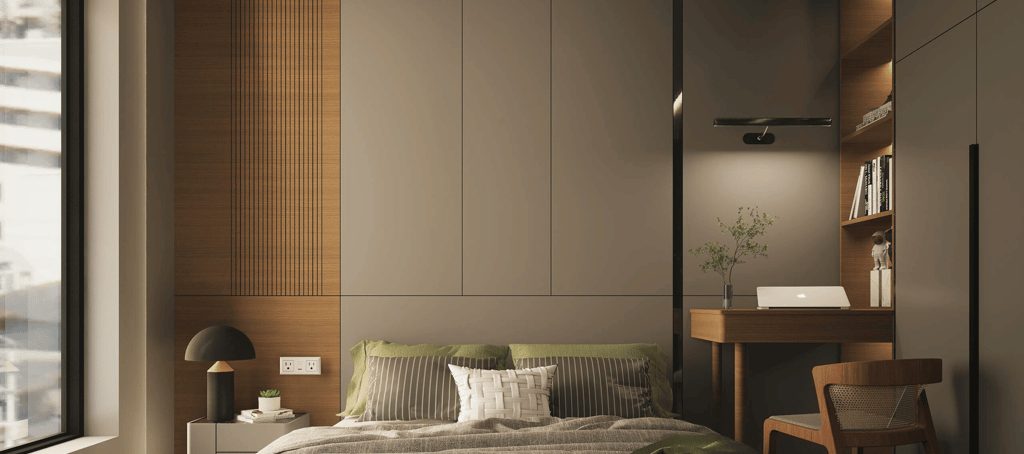Small Space, Big Style: 6 Essential Decorating Tips for Chic Apartment Living
5/13/20253 min read


Living in a small apartment doesn’t mean sacrificing style or comfort. With thoughtful design choices and smart use of space, even the tiniest rooms can feel open and inviting. Maximizing vertical space, choosing multifunctional furniture, and using light-reflecting elements like mirrors are key to making a small apartment both functional and stylish.
Storage is often the biggest challenge in compact living, but creative solutions can turn clutter into order. Utilizing hidden storage options and minimizing unnecessary items prevents overcrowding while maintaining a clean look. This careful balance of form and function creates a living space that feels spacious without losing personality.
A small apartment can become a personal oasis when style meets practicality. By focusing on simplicity, clever layouts, and decorating with intention, anyone can transform their limited square footage into a place that reflects their taste and meets their needs.
Maximizing Small Spaces
Efficient use of space is essential in small apartments. Strategic furniture choices, clever storage options, and thoughtful room layouts can significantly improve both functionality and style without overwhelming the area.
1. Space-Saving Furniture Solutions
Choosing multifunctional furniture helps save space while maintaining comfort. Pieces like sofa beds, nesting tables, and ottomans with hidden storage add utility without taking up extra square footage.
Furniture scaled to room size is critical. Oversized sofas or bulky chairs can crowd a small living room, reducing flow and usability. Compact, low-profile seating often works better.
Items that serve more than one purpose optimize space. A fold-out desk can convert a corner into a workspace, while a dining table with collapsible sides allows for flexible use.
2. Utilizing Vertical Storage
Wall space is an often-overlooked asset in small apartments. Installing tall shelving units or wall-mounted cabinets takes advantage of vertical height, freeing up floors for other uses.
Pegboards and hooks can organize tools, kitchen utensils, or decorative items. This keeps surfaces clear and adds functional design elements to bare walls.
Floating shelves deliver storage without bulky furniture. They create layers and display opportunities while maintaining an open visual feel.
3. Optimizing Floor Layout
Efficient floor plans prioritize clear pathways and zones for specific activities. Arranging furniture to define areas—like separating a lounge zone from a dining nook—helps smaller spaces feel purposeful.
Avoid cramming furniture against every wall. Sometimes pulling pieces away creates breathing room and better flow.
Using rugs or lighting can visually divide open areas into distinct sections. This supports function and adds aesthetic appeal without physical partitions.
Design Strategies for Stylish Apartments
Effective design in small apartments hinges on intentional choices that enhance space and style simultaneously. Selecting appropriate color schemes, using reflective surfaces strategically, and integrating multi-functional furniture are essential moves to optimize both function and aesthetic.
4. Choosing the Right Color Schemes
Light and neutral colors are often the best option for small apartments because they reflect more light and create a sense of openness. Shades like soft whites, pale grays, and muted beiges help expand visual space without overwhelming the eyes.
Incorporating an accent color adds personality and prevents the space from feeling too sterile. A strong but limited palette—such as navy blue cushions or a bold rug—provides contrast without clutter.
Using a consistent color scheme throughout the apartment, including walls, furniture, and decor, maintains visual cohesion. This approach avoids breaks between elements, making the entire area appear larger and more organized.
5. Creating Visual Openness With Mirrors
Mirrors serve as practical tools to enhance the perception of space. Strategically placing a large mirror opposite a window multiplies natural light and visually doubles the room’s size.
Vertical and full-length mirrors draw the eye upward, emphasizing height and making ceilings feel taller. For narrow apartments, slim, tall mirrors can be used without taking up floor space.
Additionally, mirrored furniture or decorative pieces with reflective surfaces subtly redirect light and reinforce a spacious atmosphere. Their placement should avoid clutter and keep the room balanced.
6. Incorporating Multi-Functional Decor
Furniture that serves more than one purpose is crucial in small apartments. Examples include beds with built-in storage, coffee tables that extend into dining surfaces, or ottomans with hidden compartments.
Storage can be maximized through pieces that combine seating and shelving or desks that double as vanity spaces. Choosing multi-functional decor reduces the need for extra furniture, freeing up floor area.
Designers recommend embracing minimalism paired with these versatile pieces to maintain clean lines. This creates both a sense of order and adaptability, allowing the space to meet various needs without feeling crowded.